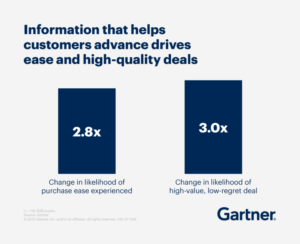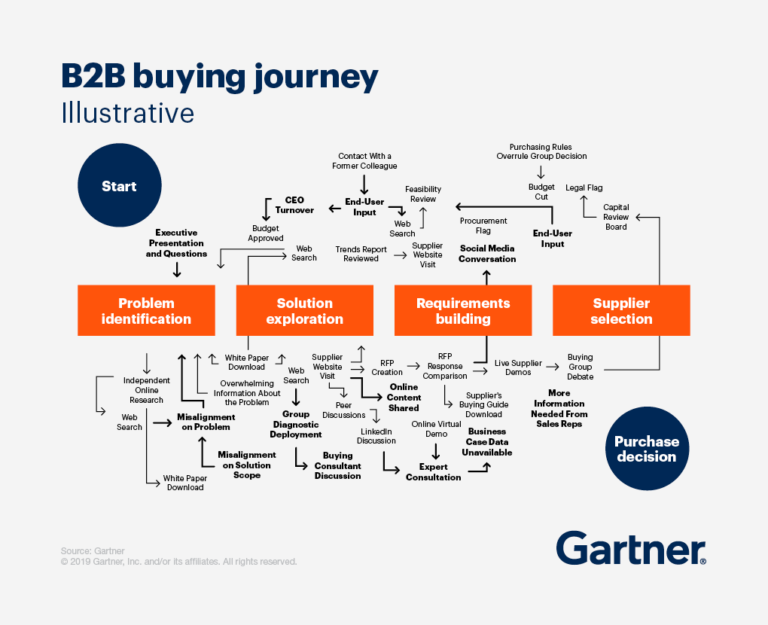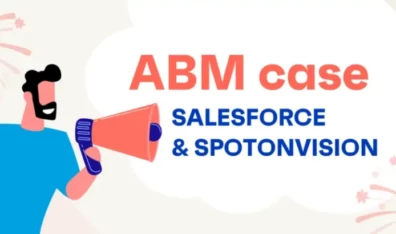Koppel je content aan diepere vragen, wij helpen je.
What’s next in B2B: buyer enablement

Een zakelijke koper beïnvloeden is niet makkelijk. Uit onderzoek van Gartner blijkt dat het B2B-koopproces drastisch blijft veranderen. Bovendien blijkt dat de moeilijkheid niet zozeer zit in vérkopen, maar meer in de uitdaging voor een koper om iets te kopen. Dit heeft te maken met de complexiteit van de beslissers (DMU). En tegelijkertijd komen er steeds meer opties en oplossingen op de markt, waardoor er een overdosis aan informatie en keuzestress kan ontstaan. Volgens Gartner zou je daarom jouw strategie moeten aanpassen naar buyer enablement. Wat buyer enablement is, wat het oplevert en hoe je het aanpakt, vertellen we je in dit artikel.
Buyer enablement: wat is het?
Buyer enablement is het eenvoudig en efficiënt maken van het koopproces voor de koper door waardevolle informatie te verstrekken. Zowel online, als via persoonlijk contact. We praten meestal over sales enablement in B2B, en eigenlijk is dat een eerste stap richting buyer enablement. Het is het creëren van een cultuur waarbij sales en marketing op een efficiëntere manier samenwerken.

Uit het Gartner onderzoek blijkt dat slechts 17 procent van de kopers gedurende het koopproces contact heeft met de leverancier. Met buyer enablement bied je de gehele DMU relevante informatie en navigeer je samen met de koper(s) door het hele koopproces. Op deze manier is de kans 2,8 keer zo groot dat kopers het koopproces als eenvoudig ervaren en jou als leverancier meer waarderen.
Zo pas je buyer enablement toe
Meer deals, grotere deals én als een waardevolle leverancier beschouwd worden; dit klinkt geweldig. Maar hoe pas je buyer enablement toe en hoe organiseer je het? Een koopproces aansturen met zowel persoonlijk contact en relevante content, kan een marketing- of salesafdeling niet alleen. Gedurende het koopproces heeft elk lid van de DMU een andere informatiebehoefte. Om hierop in te spelen is het van belang dat sales en marketing continu samenwerken en zich richten op ‘information excellence’.
Information excellence bestaat uit het aanbieden van relevante informatie op de juiste momenten in het koopproces. Tegelijkertijd beantwoord je vragen van de verschillende persona’s binnen DMU. Het verschil met reguliere contentmarketing? Buyer enablement doe je altijd samen met het salesteam.
Omdat het koopproces niet lineair verloopt is het belangrijk dat het marketingteam ook sales betrekt bij de campagne-uitwerking. Eigenlijk lijkt deze manier van werken nog het meest op account-based marketing. Het kan alleen werken als er een nauwe samenwerking tussen marketing en sales is.
Wanneer de salesafdeling betrokken is bij de inhoud van de content per fase en weet waar de leads vandaan komen. Dan kan sales de potentiële klant door het gehele koopproces goed op weg helpen.
Je koper helpen om het koopproces eenvoudig en effectief te doorlopen
De meeste marketingteams zijn zo georganiseerd dat ze leads genereren en nurturen totdat ze ‘warm’ genoeg zijn voor sales. Kopers echter kopen niet per se in die volgorde. Vandaar dat een hand-off van een gekwalificeerde lead naar sales anders georganiseerd moet worden.
Of, zoals Gartner het zegt: “Customers don’t buy in a linear fashion. Rather, they use both digital and in-person channels with near-equal frequency to complete each of the buying jobs more or less simultaneously. Therefore, Sales and Marketing must operate in parallel, not serial, fashion.”

Een tijd geleden schreef ik een artikel voor Marketingfacts naar aanleiding van een ontmoeting met filosoof en gedragswetenschapper Nick Southgate. Het ging over hoe zakelijke kopers kopen. Wat me vooral is bijgebleven van deze ontmoeting is dat je het de koper gemakkelijk moet maken, en dat je rekening moet houden met de emotie van de koper. Bovendien neemt een groep kopers (DMU) niet per se goede beslissingen. Des te meer reden om rekening te houden met een andere manier van informatievoorziening in het koopproces.
Hulp nodig met Buyer Journey?
Deel dit artikel
Related insights
Vergroot je B2B-marketing kennis
Schrijf je in om op de hoogte te blijven van onze nieuwste B2B-Marketing updates en exclusieve evenementen. Eén keer per maand rechtstreeks in jouw inbox.



